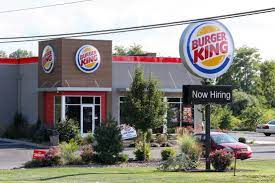How Do Fast Food Chains Contribute To Obesity In America?

(Photo Source: Insider.com)
November 4, 2022
The obesity rate in America is growing rapidly in the wrong direction. More and more people every year die due to obesity, however, society likes to sugarcoat this issue by calling obesity “body positivity”. At what point will society stop sugarcoating major problems in America?
Statistics
Approximately forty-two percent of Americans have obesity in the United States. Over the course of twenty years, the obesity rate has skyrocketed to almost double what it was. However, these statistics differ between child and adult, male and female, and even different ethnicities are prone to obesity. In children, higher obesity rates were seen as the child ages, and seen less in children who are younger. Fast food restaurants have been proven to have an impact on these statistics as well.
Fast Food Restaurants
Fast food restaurants, like McDonald’s and Wendy’s, are known for their low cost food. Some of their mottos are “quality food”. However, it’s not really quality food. Have you ever wondered what’s really in the hamburger you’re eating?
According to Business Insider, David Whipple had the same question. Whipple conducted an experiment to find out how many preservatives were in McDonald’s food, especially the burgers. What Whipple found out was that a 14 year old burger looks exactly the same as a fresh burger and that there was a possibility that fast food restaurants could use meat from years ago to try and save on costs. One can only imagine the age of the meat in various restaurants.
In addition, it is not only the foods fast food restaurants are serving. At various fast food restaurants, meals are cheap, low in nutritional value, and large in portion size. Although this seems fine for a couple of meals, this causes bad habits of poor nutrition in children and adults, leaving more of a high risk for obesity.
Costs

In today’s society, it is pushed on people to eat more nutrient dense meals. However, the cost of “healthy” foods is outrageous compared to other cheaper, quicker options. In the United States, the average cost for a salad is eleven to fifteen dollars. Not to mention, the price of seafood and other good quality meats has skyrocketed the past couple years.
In addition, it is estimated that eating nutrient dense meals costs an American family two thousand dollars more than having low nutrient meals. However, at Wendy’s, the price for a cheeseburger is only ninety nine cents. Yet, the cost for a salad at Wendy’s is over eight dollars. Many other companies have also adopted this principle as well. If consumers are worried about money, they will most likely go with the cheaper option.
Is it really cheaper?
In the long run, medical obesity costs are millions of dollars in the United States. In 2019, 173 billion dollars was an estimated total of obesity bills in the United States. For those with obesity, it is proven that medical costs are over one-thousand dollars more than other individuals.
Addictive?
Studies have shown that fast food can get addicting as time goes on. Fast food ingredients, mainly sugar and salt, have an effect on the brain that tells the body to feel good. The brain releases a chemical called dopamine which occurs when the taste buds experience a meal or food that they enjoy. Dopamine is part of the “reward system”, and the brain is constantly seeking reward. The brain wants to release dopamine often to make the body feel good, however, if eating fast food is the brain’s daily release of dopamine, it can have damaging effects on the overall health of the body. Twenty percent of adults are addicted to fast food and even more in the obese category.
Are fast food restaurants the future of eating out?











Katelyn Shears • Nov 7, 2022 at 11:04 am
Great job! I liked that you looked at the quality of the food in addition to the money side of the issue. I think that it is important to show how unhealthy foods are much cheaper than healthy options in the United States, making it easier to pick the unhealthy option. In the end, the added-up costs of unhealthy foods do not seem to save people money because of later medical costs.
Jack Fahey • Nov 5, 2022 at 8:18 am
I’m glad you mentioned the money side of the issue, as I think it’s a huge part of the problem in the US. It’s unfortunate that the most affordable food is oftentimes the least nutritious. Still, this doesn’t seem to be saving people much money when the medical bills stack up as well.